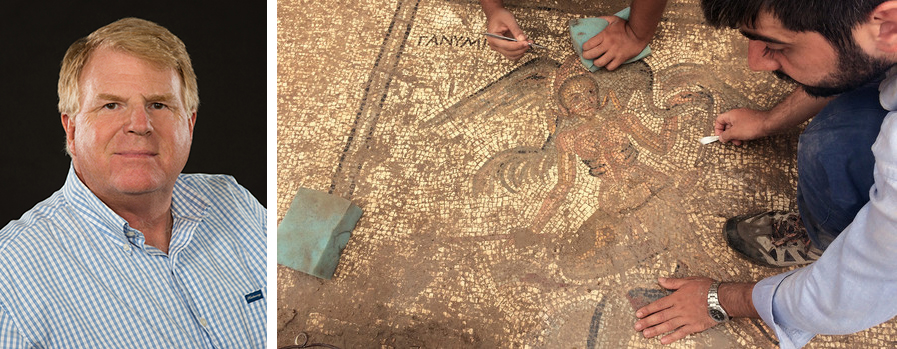
School of Art, Art History & Design Professor of Art History Michael Hoff received a $52,800 grant from The Merops Foundation to support the Antiochia ad Cragum archaeological research excavation in Turkey this summer.
It was his third recent grant from the foundation, which also awarded him $30,000 in 2017 and $42,000 last year.
Since 2005, the University of Nebraska has been excavating the remains of the ancient city of Antiochia ad Cragum, located on the southern Turkish coast. This ancient city was founded in the middle of the 1st century A.D. by Antiochus of Commagene, a client-king of Rome.
“The funds from the grant will allow us to further reveal the secrets of the ancient city,” said Hoff, who serves as director of the Antiochia ad Cragum excavation. “Last year, we were rewarded with some extraordinary finds—a massive treasure of silver and gold coins from the 17th century, a possible murder victim from the late Roman era, and a bawdy mosaic from the civic latrine attached to the Great Bath. Without these funds, further discoveries such as these would not be possible.”
Hoff intends to continue the work of uncovering the past methodically this summer.
“Every trench that we dig unlocks another piece of the puzzle of understanding this ancient city,” he said. “We will be doing many different sub-projects this coming season—thanks to the grant funds we have received. Not only will we doing what we did last year, we will also be exploring the ancient civic infrastructure. There are remnants of the aqueduct system that brought water to the city, so we will have a team working on this.”
Hoff and his team have also located traces of the ancient road that connects the ancient cities along the coastline.
“We will have a team looking to see how much of this road can be identified,” he said. “We will be continuing the exploration of buildings that have been under operation since at least last year and hopefully more surprises will occur. But even if new treasures, like the possible pirate treasure found last year, are not found, we will have still moved forward to understand more of the ancient city. Treasures are extraordinary and appeals to the public, but the way forward in understanding the ancient city is through examining the infrastructure and finding simple things like potsherds.”
For more information on last summer’s discoveries at the site, visit https://go.unl.edu/f6z0.